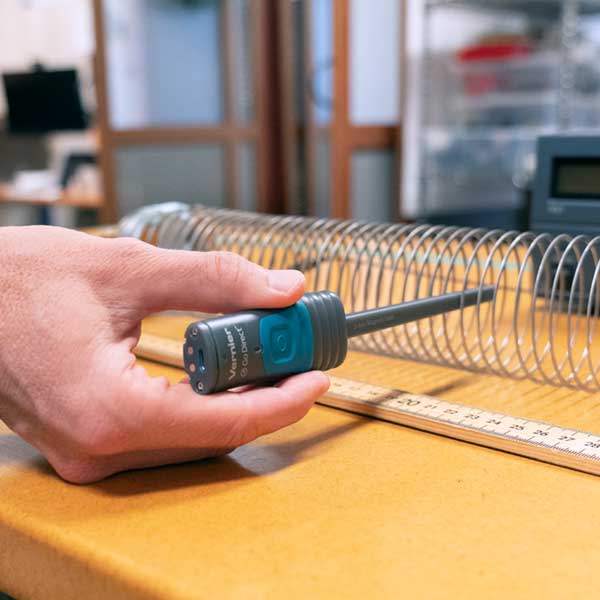
Sharing ideas and inspiration for engagement, inclusion, and excellence in STEM

Looking for fresh ways to engage your students in the study of magnetic fields? Guide your students through the invisible forces that influence our world with the Go Direct 3-Axis Magnetic Field Sensor.
This versatile tool measures the components of the magnetic field along three orthogonal axes, which allows students to determine the magnitude and direction of the magnetic field at any point in space. Only one axis (along the wand) is active by default when students first connect it to their device, making it easy to use for beginner and advanced students alike.
Here are three engaging experiments designed to explore magnetic fields using the Go Direct 3-Axis Magnetic Field Sensor.
1. Sea Floor Spreading
Level: Middle School and 9th Grade
When it comes to introducing magnetism to students, anchoring the study in practical applications and real-world contexts can go a long way. Before exploring more advanced, math-heavy aspects, start with a qualitative approach.
In this experiment, students get hands-on experience detecting magnets and understanding magnetic poles (north and south). Using magnets buried in a model of a sea floor spreading zone, they can observe the changes in field orientation as they move the sensor across the simulated sea floor. Students use the resulting magnetic field map to explain how this is evidence of sea floor spreading. Magnet detection activities like this serve as engaging introductory lessons.
This experiment includes the following objectives:
- Use a Magnetic Field Sensor to measure magnetic field.
- Map sea floor spreading.
- Interpret your results.

2. The Magnetic Field in a Coil
Level: High School and College
For students ready for a deeper dive into quantitative data collection, the “Magnetic Field in a Coil” experiment is ideal. Here, students explore the relationship between magnetic fields and electric current flowing through coils of wire.
Using a Magnetic Field Sensor, students measure the field at the center of a coil. They examine how the magnetic field changes according to the number of turns in the coil and the current flowing through it. This experiment offers a hands-on experience with the fundamental concept of magnetic fields generated by electric currents and encourages critical thinking and problem-solving skills.
This experiment includes the following objectives:
- Use a Magnetic Field Sensor to measure the field at the center of a coil.
- Determine the relationship between magnetic field and the number of turns in a coil.
- Determine the relationship between magnetic field and the current in a coil.
- Explore the Earth’s magnetic field in your classroom.

3. The Magnetic Field in a Slinky
Level: High School and College
Now, let’s explore one of our favorite experiments that combines qualitative and quantitative aspects and bridges the gap between theoretical physics concepts and practical applications. This experiment involves a solenoid, which can be mimicked using a metal Slinky®. A solenoid is essentially a tube wrapped with wire, and when current flows through the wire, it generates a magnetic field.
In this experiment, students investigate factors affecting the magnetic field inside the Slinky. By inserting a magnetic field sensor between the coils, they can measure the magnetic field inside and determine how it varies according to the amount of current and the linear density of the coils of wire. This experiment not only allows students to explore the relationship between current strength and magnetic field strength but also introduces the concept of µ0, the permeability constant, a fundamental constant of physics.
This experiment includes the following objectives:
- Determine the relationship between magnetic field and the current in a solenoid.
- Determine the relationship between magnetic field and the number of turns per meter in a solenoid.
- Study how the field varies inside and outside a solenoid.
- Determine the value of µ0, the permeability constant.

By incorporating hands-on experiments like these, you can help make theories of magnetism more engaging and understandable. We encourage you to give these experiments a try in your classroom and share your experience with us!
Do you have questions about your Go Direct 3-Axis Magnetic Field Sensor? Are you looking for even more ways to engage your students in the physics classroom? We’re here to help! Reach out to physics@vernier.com or call 888-837-6437.
Share this Article

Sign up for our newsletter
Stay in the loop! Beyond Measure delivers monthly updates on the latest news, ideas, and STEM resources from Vernier.






